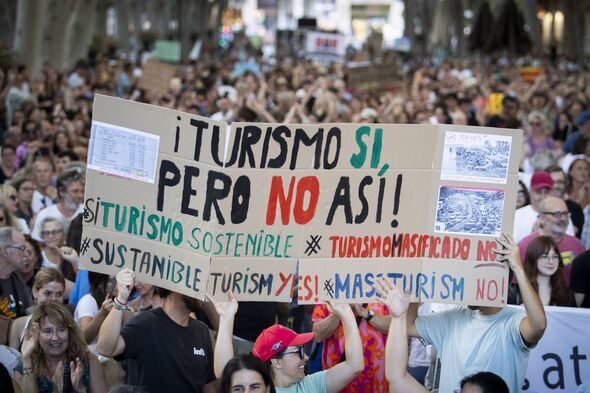World
Tourism in Spain Faces Decline Amid Major Protests and Spending Drop

Spain’s tourism industry is experiencing significant challenges following large-scale protests that erupted in popular holiday destinations such as Majorca and Tenerife this summer. According to Exceltur, a prominent industry group, the growth of Spain’s tourism sector has slowed markedly. The group warned on Tuesday that the sector’s contribution to the nation’s economic expansion this year will not meet prior expectations.
Declining visitor spending, particularly from tourists in Europe and the United States, is one of the primary factors behind this slowdown. The recent demonstrations, which have drawn international attention, are believed to have discouraged potential travelers from visiting Spain. In light of these developments, Exceltur has revised its forecast, projecting that tourism-related activity in Spain, the world’s second most-visited country, will grow by only 2.8% in 2025—down from the 3.3% growth anticipated in July and well below the 5.5% expansion recorded last year.
According to Reuters, Exceltur now estimates that the tourism sector will contribute 13.1% to Spain’s gross domestic product (GDP) this year, a decrease from the earlier prediction of 13.5%. Last year, Spain welcomed a record 94 million tourists. By August 2023, 66.8 million tourists had arrived, reflecting a 3.9% increase from the previous year. Despite this growth, the total number of international tourists is expected to fall short of the 100 million target set by the World Travel and Tourism Council earlier this year.
Sales across various sectors including hotels, airlines, and restaurants saw a growth of 2.8% during the peak summer season, a notable decline from the 6.3% increase recorded in the same period of 2022. Looking ahead, Exceltur forecasts that sales will rise by 2% in the fourth quarter of 2023. The slowdown in tourism is largely attributed to reduced spending from visitors from Germany, France, Turkey, and the United States.
Despite these challenges, there was a notable increase in travelers from the United Kingdom, which accounted for 26.5% of total arrivals. Additionally, rising numbers of tourists from China and Poland have helped to partially offset the downturn during the high season. Domestic tourism has also remained stable, providing some support to the overall industry amid these turbulent times.
As Spain navigates these challenges, the implications for the economy and the future of its tourism sector remain significant, making it a critical area for both policymakers and industry stakeholders to monitor closely.
-

 Health3 months ago
Health3 months agoNeurologist Warns Excessive Use of Supplements Can Harm Brain
-

 Health3 months ago
Health3 months agoFiona Phillips’ Husband Shares Heartfelt Update on Her Alzheimer’s Journey
-

 Science1 month ago
Science1 month agoBrian Cox Addresses Claims of Alien Probe in 3I/ATLAS Discovery
-

 Science1 month ago
Science1 month agoNASA Investigates Unusual Comet 3I/ATLAS; New Findings Emerge
-

 Science4 weeks ago
Science4 weeks agoScientists Examine 3I/ATLAS: Alien Artifact or Cosmic Oddity?
-

 Entertainment4 months ago
Entertainment4 months agoKerry Katona Discusses Future Baby Plans and Brian McFadden’s Wedding
-

 Science4 weeks ago
Science4 weeks agoNASA Investigates Speedy Object 3I/ATLAS, Sparking Speculation
-

 Entertainment4 months ago
Entertainment4 months agoEmmerdale Faces Tension as Dylan and April’s Lives Hang in the Balance
-

 World3 months ago
World3 months agoCole Palmer’s Cryptic Message to Kobbie Mainoo Following Loan Talks
-

 Science4 weeks ago
Science4 weeks agoNASA Scientists Explore Origins of 3I/ATLAS, a Fast-Moving Visitor
-

 Entertainment4 months ago
Entertainment4 months agoLove Island Star Toni Laite’s Mother Expresses Disappointment Over Coupling Decision
-

 Entertainment3 months ago
Entertainment3 months agoMajor Cast Changes at Coronation Street: Exits and Returns in 2025









